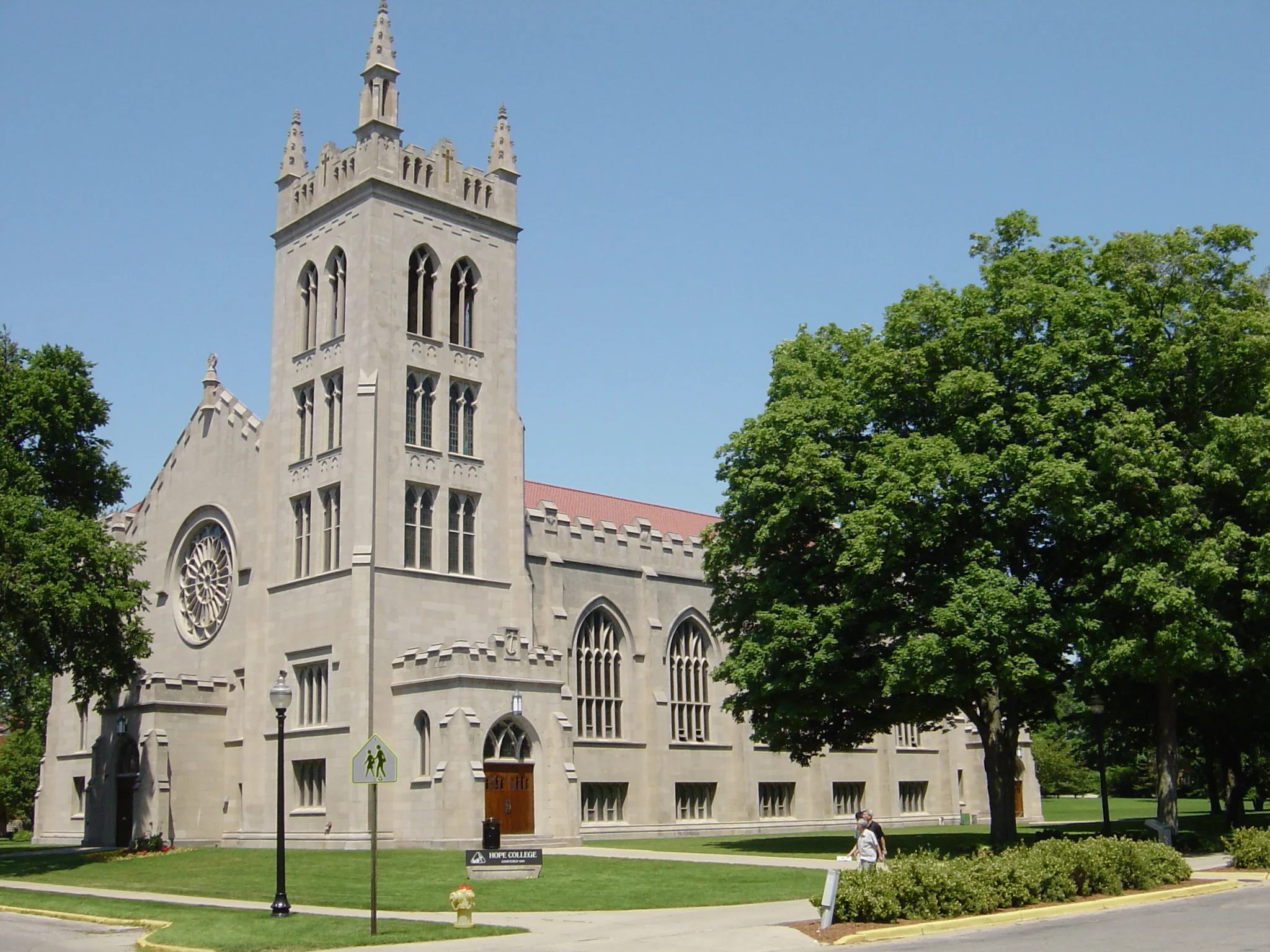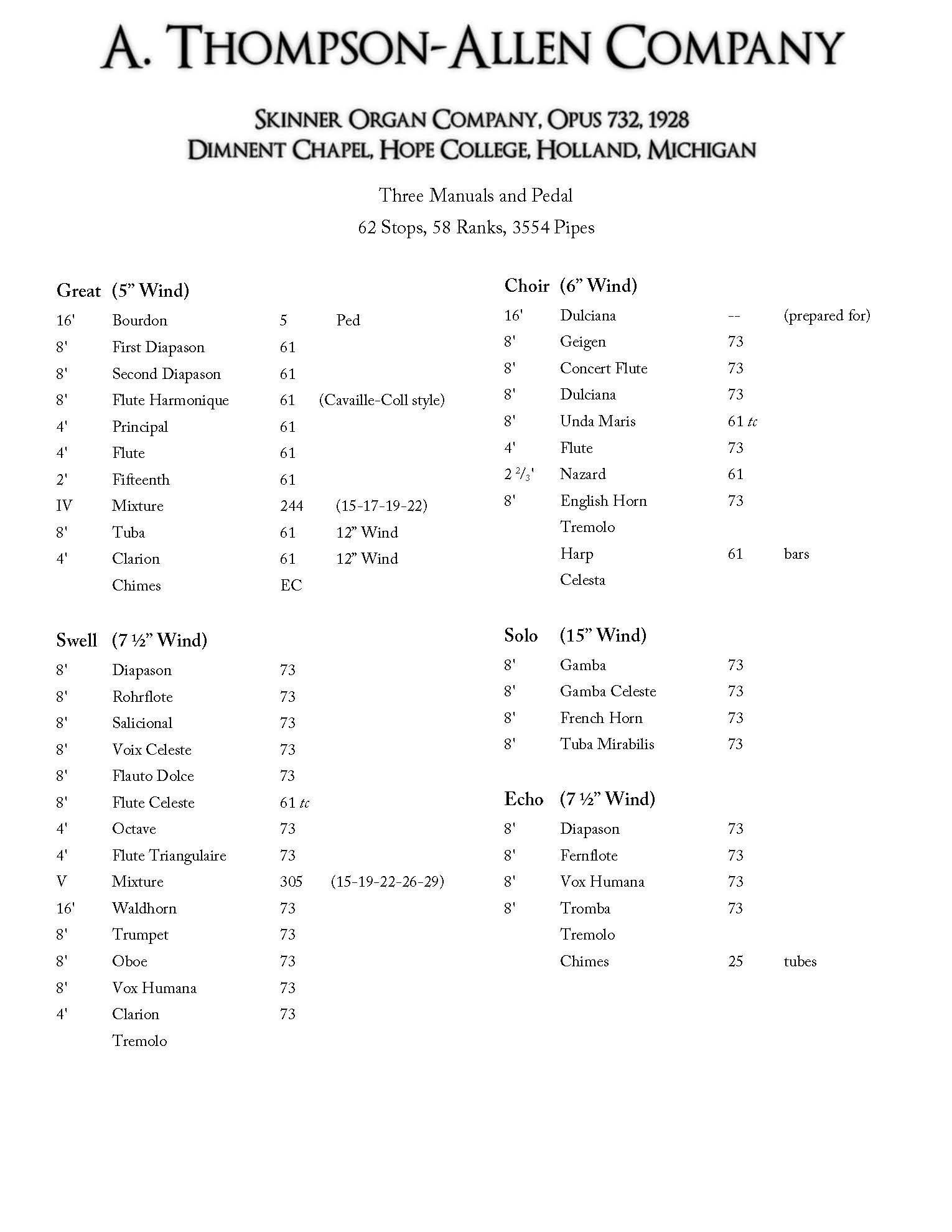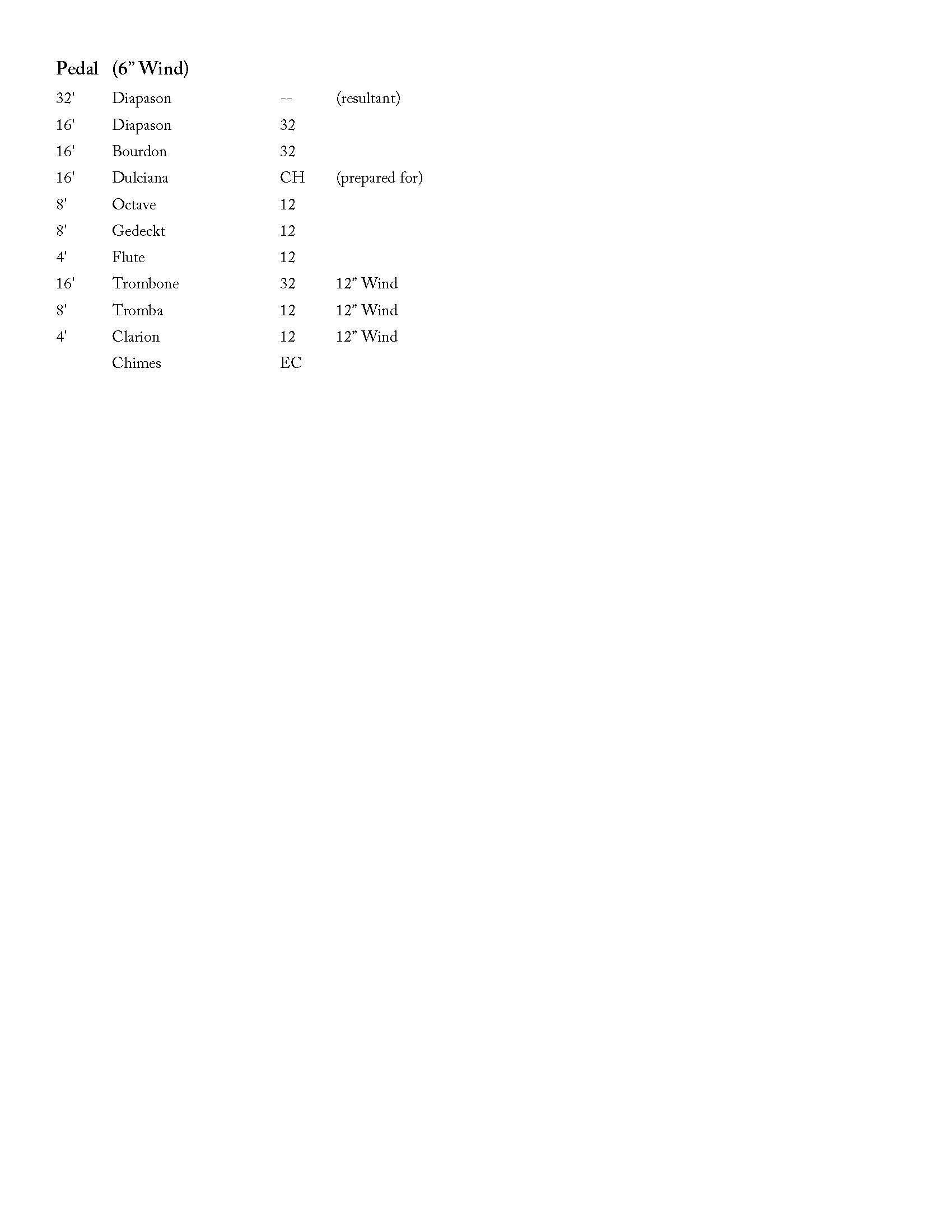Dimnent Chapel at Hope College
Holland, Michigan
Skinner Organ Company, Opus 732, 1928
1928 was an eventful year for America. Charles Lindbergh received the Medal of Honor for his history-making trans-Atlantic solo flight. Alexander Fleming discovered penicillin, the miracle drug of the century. The Motion Picture Academy of Arts and Sciences presented its first awards for distinguished film-making, known ever hereafter as “the Oscars.” Mickey Mouse appeared for the first time in Steamboat Willie, the first cartoon featuring a soundtrack. George Gershwin’s An American in Paris received its premiere performance at Carnegie Hall with the composer at the piano. General Electric introduced television broadcasts. And Hope College signed a contract with the renowned Skinner Organ Company for a large four-manual pipe organ to be installed in the new Memorial Chapel, later renamed in 1959 for Dr. Edward D. Dimnent, Hope’s fifth president.
1928 was also a productive year for the Skinner Organ Company. Founded in 1901 by Ernest M. Skinner, by 1928 it had become America’s most prestigious organ building firm. The Boston factory employed more than 200 people, many of the men and women having spent their entire careers perfecting their unique skills, frequently continuing family traditions in organ building that had spanned generations. Large and important Skinner organs could be found in the country’s most distinguished educational, civic and religious institutions. According to the February 1929 issue of The Diapason, the periodical of record for the organ world, the new organ for Hope College would have four manuals, forty-eight speaking stops and a total of 3,206 pipes ranging in size from tiny whistles the size of a pencil to huge floor-shakers standing more than eighteen feet tall and weighing in excess of 500 pounds each.
The Skinner Organ Company took advantage of the unique spatial accommodations of the new Chapel. The various parts of the instrument were tucked away into chambers in the corners of the building, including the Echo Organ that was placed at the back of the room so that its sounds might permeate the most distant reaches of Dimnent Chapel. As a result, the effect of Opus 732 seems to insinuate itself into the room, creating a seamless tapestry of music and architecture.
Although the instrument was an instant success and quickly gained a national reputation for its subtle and luscious tonal colors, as well as for the power and majesty of its full ensemble, it suffered its share of trials over the decades. In an attempt to improve upon perfection, some of its pipes were altered by well-meaning hands that sought to change the sound of the organ. Repeated encounters with the Chapel’s internal roof drainage system left a good deal of the organ spattered with water and covered with chunks of plaster. Fine particles of dust choked the speech of many of the smaller pipes. And finally the mechanism of the organ began to fail after more than seventy years of reliable use, leaving the instrument with silent pipes, musical potholes that had to be negotiated by those who tried to use the organ for Chapel services and musical performances. In short, the organ became a shadow of its former self, although the musicians who played it continued to love it and fantasize over its potential.
It is at times like these that pipe organs are at greatest risk. Faced with a large, old organ that has begun to falter and no longer sounds its best, many institutions naturally would give thought to buying a new instrument. After all, the world of organ building continues to thrive today, though modern builders understandably desire to create organs that have kept pace with the inevitable march of time. A comparable new organ by a first-rate builder would very likely have cost $2 million to build today. But the administration and musicians of Hope College had a different vision. They sought to preserve the Skinner organ as a responsible act of good stewardship, paying respect to the men and women who ordered, designed, built, and paid for Opus 732 seventy-five years ago. So they elected instead to have the organ completely restored as new, in order that it might continue to serve the needs of the College in the generations to come. True to the tradition of restoration, the College did not seek, nor did the restorers want, to “update” or “modernize” that which was manifestly timeless in nature. Works of art have no need of further improvement, but rather require only to be carefully preserved and handed down to succeeding generations like the heirlooms they are.
Opus 732 was dismantled and shipped piece by piece to New England, where it was carefully and respectfully restored. The pipes were washed, refinished and regulated for their original speech characteristics, the mechanism refurbished with new materials of identical quality to those installed in 1929, including the four-manual console, that remarkable nerve-center of the organ with its astonishingly clever internal computer built of wood, brass and leather, operating on air-pressure. The few alterations to the organ’s pipes were researched, documented and reversed, using the Skinner Company’s original shop records as a resource guide. And, resolved that this extraordinary instrument would not be subject to further water damage, the administration redesigned the roof drainage system so that it could never again threaten this musical resource that so faithfully had served Hope College over the years.
The Dimnent Chapel organ was formally dedicated on January 30, 2007 in a program that included welcoming words from Dr. James E. Bultman, President of Hope College; remarks on the restoration process by Dr. James N. Boelkins, Provost of the College; a litany of dedication by The Rev. Trygve D. Johnson; singing of the hymn Praise, my soul, the King of heaven, accompanied by Richard Newman, ’06; and a prayer of dedication. The evening concluded with a rededication recital by Dr. Huw Lewis, College Organist, including:
1. Passacaglia in C Minor, BWV 582 (Bach)
2. Andante sostenuto (from Symphonie Gothique, Opus 70) (Widor)
3. Adagio and Allegro, K 594 (Mozart)
4. Scherzo in E Major (Gigout)
5. Sonata on the 94th Psalm (Reubke)



